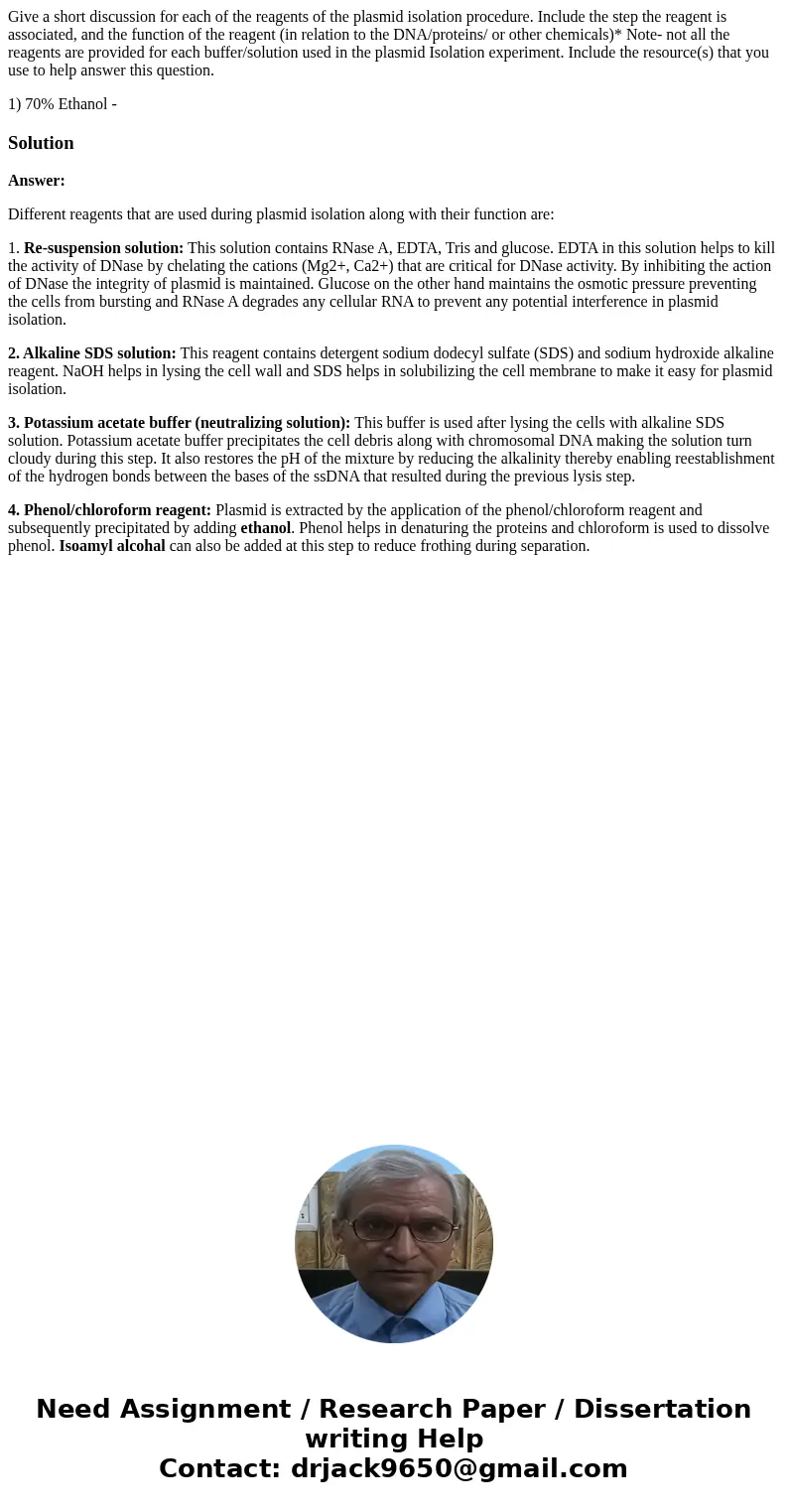Give a short discussion for each of the reagents of the plas
Give a short discussion for each of the reagents of the plasmid isolation procedure. Include the step the reagent is associated, and the function of the reagent (in relation to the DNA/proteins/ or other chemicals)* Note- not all the reagents are provided for each buffer/solution used in the plasmid Isolation experiment. Include the resource(s) that you use to help answer this question.
1) 70% Ethanol -
Solution
Answer:
Different reagents that are used during plasmid isolation along with their function are:
1. Re-suspension solution: This solution contains RNase A, EDTA, Tris and glucose. EDTA in this solution helps to kill the activity of DNase by chelating the cations (Mg2+, Ca2+) that are critical for DNase activity. By inhibiting the action of DNase the integrity of plasmid is maintained. Glucose on the other hand maintains the osmotic pressure preventing the cells from bursting and RNase A degrades any cellular RNA to prevent any potential interference in plasmid isolation.
2. Alkaline SDS solution: This reagent contains detergent sodium dodecyl sulfate (SDS) and sodium hydroxide alkaline reagent. NaOH helps in lysing the cell wall and SDS helps in solubilizing the cell membrane to make it easy for plasmid isolation.
3. Potassium acetate buffer (neutralizing solution): This buffer is used after lysing the cells with alkaline SDS solution. Potassium acetate buffer precipitates the cell debris along with chromosomal DNA making the solution turn cloudy during this step. It also restores the pH of the mixture by reducing the alkalinity thereby enabling reestablishment of the hydrogen bonds between the bases of the ssDNA that resulted during the previous lysis step.
4. Phenol/chloroform reagent: Plasmid is extracted by the application of the phenol/chloroform reagent and subsequently precipitated by adding ethanol. Phenol helps in denaturing the proteins and chloroform is used to dissolve phenol. Isoamyl alcohal can also be added at this step to reduce frothing during separation.

 Homework Sourse
Homework Sourse